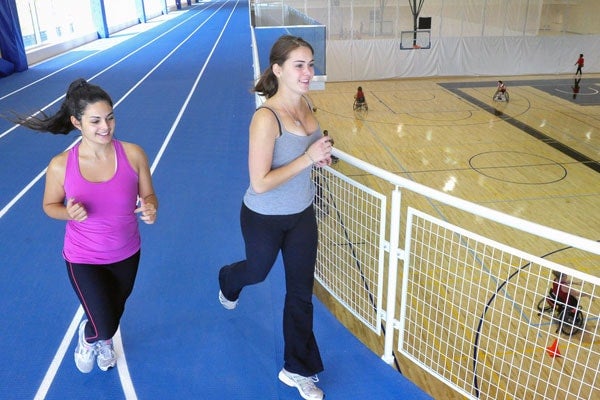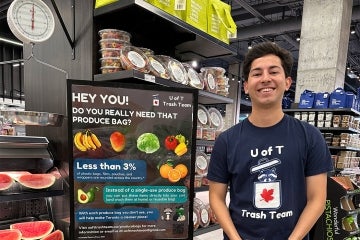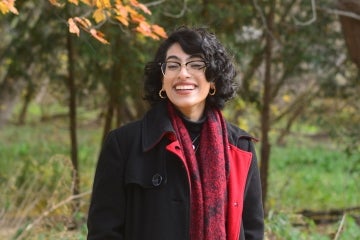
Can hosting the 2015 Pan Am/Parapan Am Games make Toronto a healthier city?
Published: April 10, 2015
This summer, thousands of the world’s top athletes will descend on our city to compete in the Toronto 2015 Pan Am/ Parapan Am Games, showcasing not only athletic prowess, but the dynamic and thriving City of Toronto.
Organizers say a key priority of TO2015 is to “foster sport development and healthy living” and Professor Peter Donnelly says there are plenty of opportunities for international games to create a legacy of health for a host city.
But it’s up to Toronto to make it happen.
“First of all, a legacy [of health and increased physical activity] needs to be constructed into the bid, with a plan clearly set for putting that money to use,” says Donnelly. “If it’s not there, once you’ve won the bid, everything is about getting ready for the games.”
Professor Bruce Kidd, vice-president and principal of University of Toronto Scarborough and a former Olympic athlete, sees the same trend. “Very few major games hosts have given much thought to stimulating broad participation after, as a result, of the games. In fact, the track record is extremely disappointing. But I'm hopeful that we can do a better job in Toronto.”
Donnelly, who spearheads U of T’s Centre for Sport Policy Studies, points to the London Olympics as an example of good intentions that fell by the wayside. Organizers of the 2012 Olympics vowed that the Games would “inspire a generation.”
“It was all about increasing participation in the UK. That was part of their bid; they put a little funding into school sports for a while. There were a couple of experiments around opening access to swimming pools.”
Over time though, enthusiasm waned. “The Games ended up costing so much, the money got pulled from those initiatives. Funding needs to be built in as absolute.”
 Donnelly says that plans at the newly-built UTSC pools have established a good framework for long-term results. “The use agreement is really good. It’s for high performance, it’s for UTSC students and it’s for the community.” Kidd is also optimistic because there has been local buy-in in the planning and financing of Toronto 2015’s major facilities – both new builds and renovations.
Donnelly says that plans at the newly-built UTSC pools have established a good framework for long-term results. “The use agreement is really good. It’s for high performance, it’s for UTSC students and it’s for the community.” Kidd is also optimistic because there has been local buy-in in the planning and financing of Toronto 2015’s major facilities – both new builds and renovations.
“While 56 per cent of the funds came from the federal and provincial governments through Toronto 2015, the local municipalities and universities that got these facilities had to come up with the other 44 per cent,” Kidd explains, citing the Back Campus Fields on St. George campus as an example. “The financial stake of local partners increases the chance that there will be a voice for 'sport for all' in the facilities after the Games.”
Given his role at UTSC, Kidd is especially committed to realizing the full potential of the new athletic facilities on campus. “I can tell you that my colleagues and I are determined to use the Toronto Pan Am Sports Centre to make UTSC one of the most physical activity supportive and healthy campuses in North America.”
Beyond U of T’s borders, Donnelly says decisions made about the waterfront development can play a huge role in making Torontonians more active. Transforming the athletes’ village to create affordable housing, and increasing access to the lake, could make a major impact. Improving our parks and trail systems for the Games will also help to establish a healthier future.
“If the city completes the Pan Am Path plan, for example, I think that could be a terrific legacy,” he says. While part of the Pan Am Path is scheduled to open before the Games, the entire path is slated for completion by 2017. A series of connected trails that will create 84 kilometres of pathways for active transport, cultural enrichment and community building, the path will ultimately extend from the Claireville Reservoir to just south of Rouge Park.
“These Games have provided an incredible opportunity for innovative city planning to improve the health of all of our citizens; it’s the first major games to come to Ontario since 1930,” Donnelly says. “I hope we are able to make the most of it.”
For Kidd, the real test is what we achieve on a sustainable basis by 2020. “We will have to work very hard in the months and years after the Games to ensure that our dreams for equitable sport for all will be realized.”



